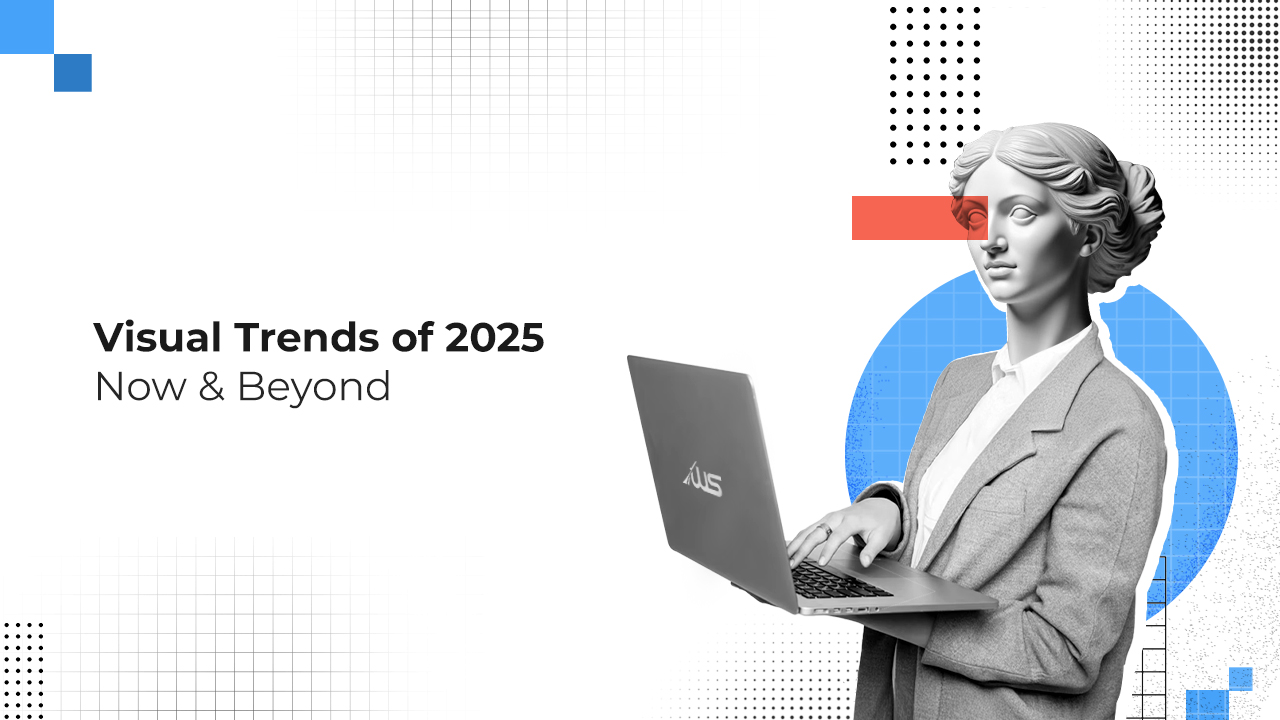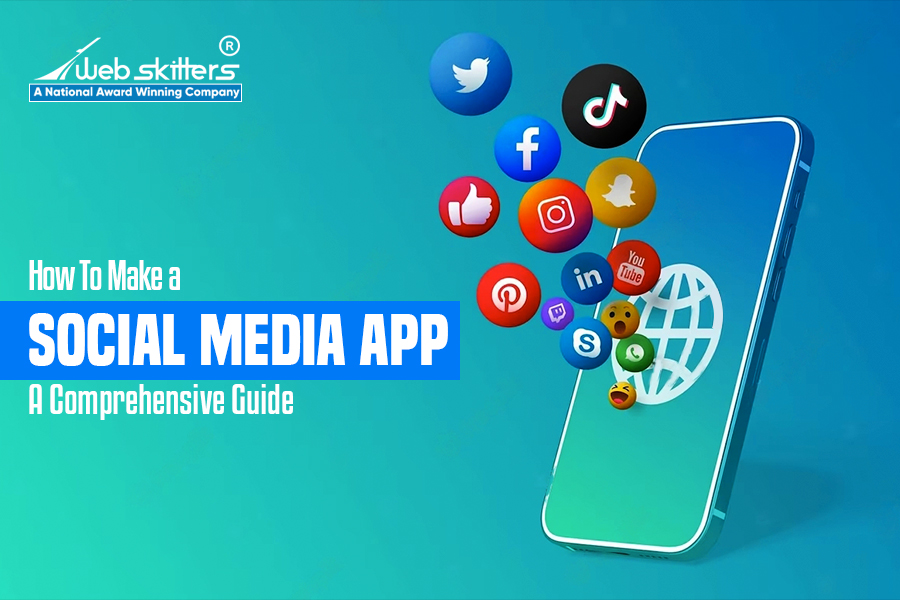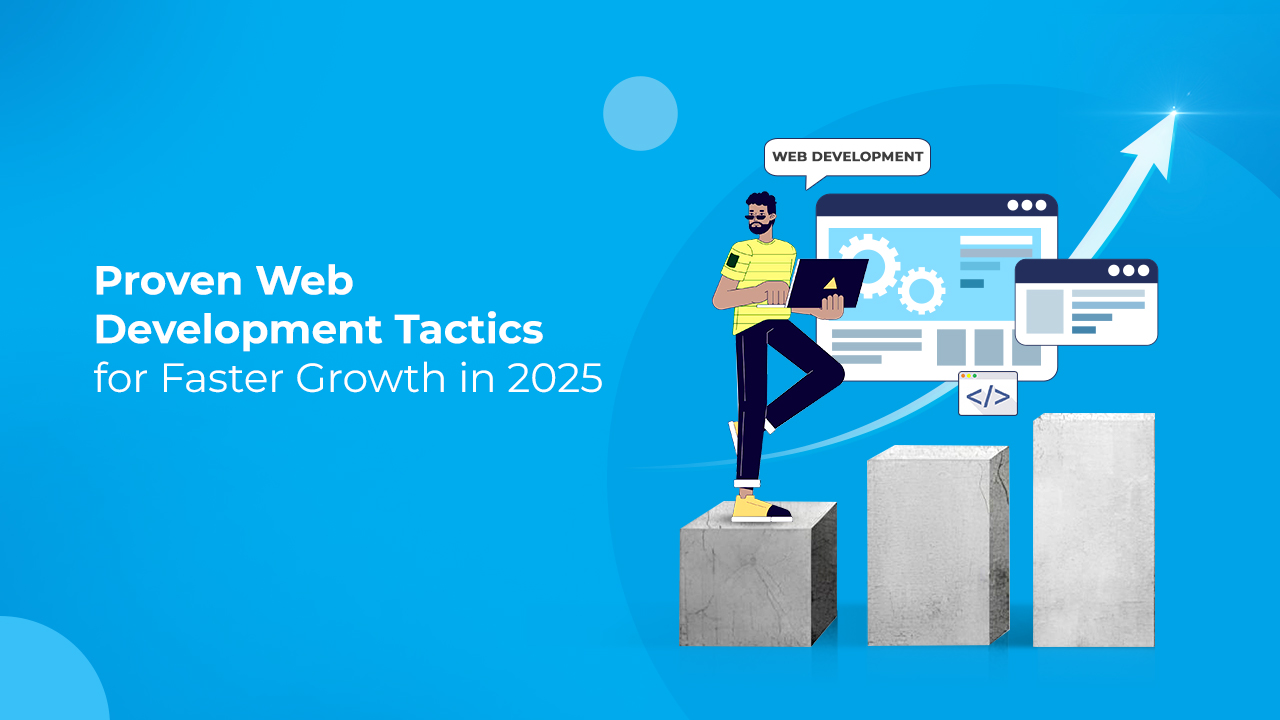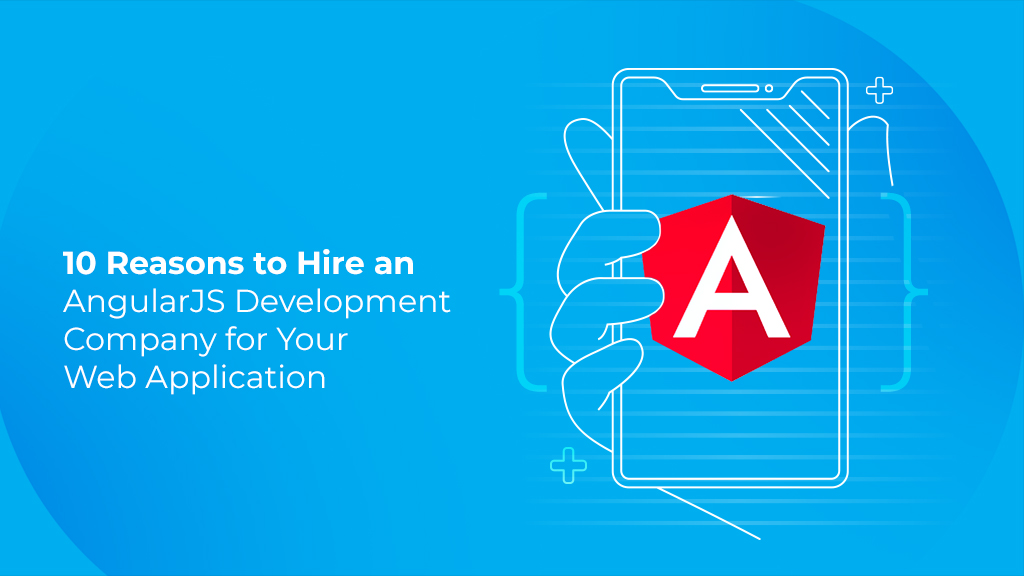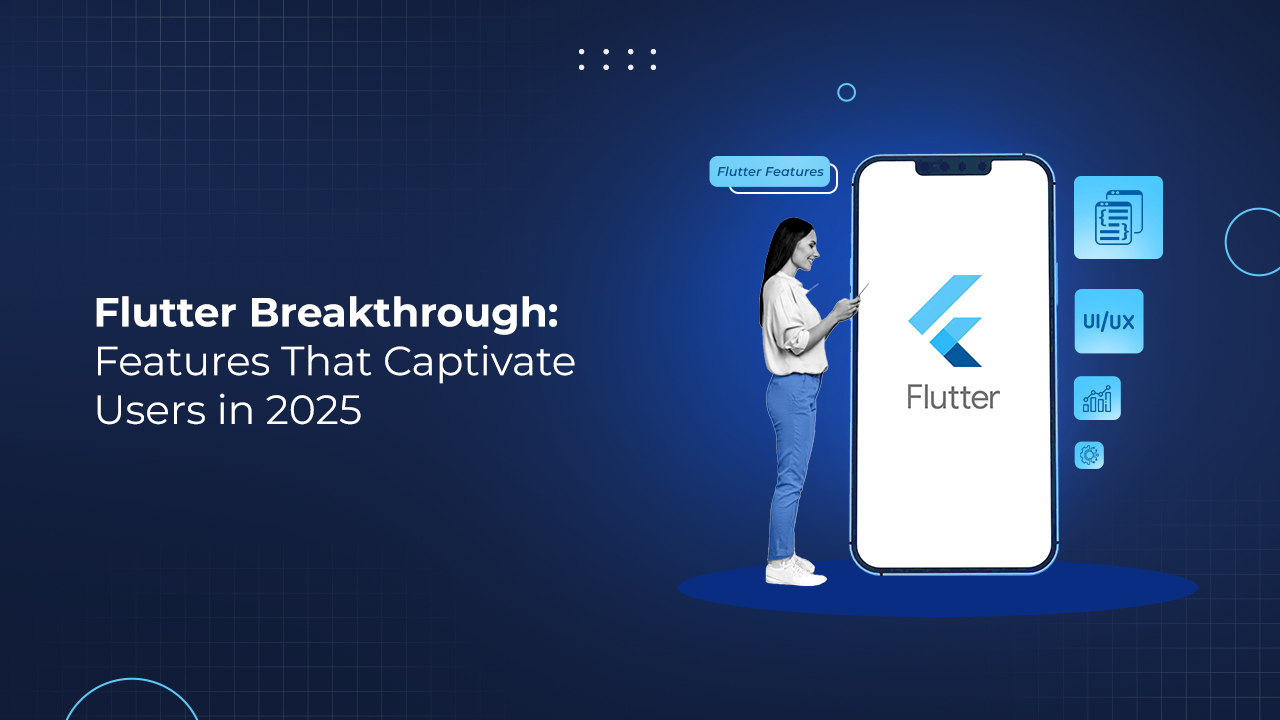
8 Breakthrough Flutter Features That Will Captivate Users in 2025
Planning on building an app that users will love? With powerful Flutter features, you can craft experiences that stand out.
Research by Statista suggests that over 45% of cross-platform apps now run on Flutter and that number is still climbing.
Think about that.
Nearly half the market is choosing this one toolkit.
The reason?
Users are spending less time on apps that feel awkward or slow.
Engagement is everything these days.
If the app you have created can’t hold someone’s attention for more than ten seconds, it’s already losing.
App users only want products that load quickly, look good on every screen, and update without effort.
That’s where Flutter comes in.
Advanced Flutter features are helping the framework dominate the market as a practical, proven way to build better app experiences.
What is Flutter?
Flutter is a UI software development toolkit.
What that means is that it is a framework that developers use, which simplifies and speeds up the development process.
The reason for this accelerated process is the fact that Flutter comes with pre-built components, tools, and libraries.
A single codebase allows you to build mobile, web, as well as desktop apps. Developers don’t have to build apps from scratch.
In Flutter app development, it is possible to design once and deploy everywhere, which means developers don’t need to write separate code for different environments – thanks to Flutter features.
This means that cross-platform app development is possible, where apps for Android and iOS can be created simultaneously.
Since businesses always favor shorter development time without any compromise in terms of functionality, they tend to hire Flutter app developers.
8 Main Flutter Features That Enhance User Engagement
1. Fast Load Times (Hot Reload)
Everyone is impatient with apps.
If something takes too long to load or refresh, most will just close it.
Flutter avoids that problem. Once developers make a change, it shows up instantly. It’s called hot reload.
Now, imagine building an app and being able to see changes in real time while it’s still being worked on.
There will obviously be fewer delays, speedy feedback, and a smoother process.
In the long run, your users are not stuck staring at the loading icon. They stay inside the app longer and don’t get frustrated with bugs or slow performance.
That really does make a difference. These are the kinds of Flutter features that developers now expect from a modern UI toolkit.
2. Smooth Scrolling and Animations
The truth is, people notice when something feels good to use.
When you use an app, there are certain things you will expect. Scrolling without lag, buttons of a typical size and placement, animations that not over-the-top.
Flutter apps tend to have that. It’s built into the system.
The scrolling behavior, the gestures, the way things move, all of it is smoother than what you would usually expect on cheaper-built apps.
That kind of polish creates a small but real emotional response in users. They may not say it out loud, but they enjoy using your app more.
And that makes them come back to it instead of uninstalling it after a few days.
Flutter user experience is strongly impacted by these smooth transitions and visual performance.
3. Consistent Look Across Devices
You may not realize how frustrating it is when your app looks great on one phone and completely disorganized on another.
Text overlaps. Buttons disappear. Layouts break.
Flutter prevents that from happening.
The same design works across Android, iOS, and tablets. You get the same structure, same flow, no matter the screen.
Flutters’ widget library has pre-built UI components, so whichever platform is being used by the app user, the interface will remain uniform in appearance and behavior.
So if you care about how your app is displayed to users (hint: You should.), this kind of reliability matters.
4. Built-In Widgets that Feel Native
When someone opens an app, they expect it to feel like it belongs on their phone.
Android users will expect the familiarity of their back buttons.
iPhone users are used to swiping from the edge. Flutter does not force you to build tiny details like this from scratch.
The framework already comes with widgets that behave naturally on both platforms.
What that means is, your app doesn’t feel foreign or out of place. Users don’t need to learn how to use it.
It fits in with everything else on their device. And because of that, people stick around longer and actually use it.
5. Easy Integration with Existing Systems
In a lot of cases, people who want to build apps already have a backend, a website, or an older app.
They are not starting from zero.
It would be quite frustrating to rebuild everything from scratch just because they decided to launch a new app.
They don’t have to worry about that if they opt for Flutter app development.
This framework is able to slot into (integrate with) older systems while still allowing you to modernize the parts your users see.
This means you can gradually improve your app instead of starting from scratch.
App users get a sleek experience while you keep things stable in the background.
Flutter offers a practical way to build your app without causing disruptions to existing systems. Many of the new Flutter capabilities have made this process even more seamless.
6. Custom UI Without High Costs
Often, business owners think custom app design means expensive development.
And they are not wrong, unless you plan to build a Flutter app.
On Flutter, you get a lot of room to customize how your app looks, right down to the tiniest detail.
The Flutter user experience can be fully customized.
Colours, shapes, how pages move, it is all possible without needing weeks of extra work.
So instead of choosing the same old template everyone else is using, you get to create something that actually highlights your brand.
When users open your app and it looks and feels different (in a good way), they take notice. That difference can turn casual users into loyal ones.
It’s one of those breakthrough Flutter features 2025, that will shape how future apps stand out.
7. Seamless In-App Navigation
We’ve heard time and again that when app users can’t find what they are looking for in the first minute, they leave.
That’s just how it is.
App developers need a framework that allows them to design navigation that is fast, logical, and does not feel haphazard.
Flutter provides this.
Menus open quickly. Transitions are smooth. You can add swipe gestures or smart back buttons without them breaking on different phones.
When someone moves from one part of your app to another and they enjoy the experience, they stay longer and explore more.
Apps made on Flutter are so intuitive that users hardly get confused or stuck while navigating through it.
8. Support for Internationalization
If you want your app to target users from different countries or language backgrounds, Flutter is your go-to framework.
Though you must make sure to stay current with Flutter SDK updates to take full advantage of the framework.
Flutter makes it easy to build your app in multiple languages without rebuilding the whole thing every time.
You can customize it to switch text, layout direction, and date formats to fit the user’s region.
Adding app patches for these customizations often tends to be awkward.
It’s built into the Flutter framework. So whether someone’s using your app in English, French, Arabic, or Spanish, the app still feels like it was made for them.
Flutter features like this are appreciated by users, and they can help your app grow faster in new markets.
Tech Trends Shaping the Future of Flutter App Development
-
AI and ML
A few years ago, when apps were supposedly “AI-powered,” it didn’t mean much.
Now it actually does.
You can build apps that learn what users do, suggest things they might need next, or even talk back naturally.
And Flutter features lets you bring that into your app without rebuilding from scratch. You can integrate with powerful AI tools.
This is similar to chat assistants, but without the robotic feel.
A search feature that knows what you are going to type in the search bar before you type it.
Or content feeds that adjust to users’ preferences based on past online behavior.
All this keeps people inside your app longer, because they actually find the app helpful and effortless to use.
-
AR and VR
At the moment, the whole buying experience has been taken online.
So, it makes sense that technology like virtual try-ons or AR walkthroughs are the norm. Online buyers expect it.
Not just big brands. Even small businesses are using these features.
The plugins on Flutter allow you to include AR features without building from the ground up.
High-performance rendering is possible on the Flutter framework which is vital for ensuring rich AR visuals.
What’s more, on Flutter, developers can build advanced spatial interfaces required for immersive VR apps.
Users can point their app camera at their room and virtually place a chair in it. Or they can view a product in 3D before feeling confident to buy it.
Small things like this add a sense of realism and result in popular, must-have apps. These Flutter features are enhanced even more when paired with smart Flutter UI capabilities.
-
Automation
Behind the scenes, a lot of Flutter development is speeding up because of automation.
Not just the coding part, but testing, deploying, fixing crashes. It’s all getting faster.
And the faster your team can respond to issues, the better your user experience becomes.
Suppose app users experience a bug, but it gets fixed the same day without an app update, they are not going to complain.
They’ll keep using it.
That’s the power of automation. It serves to give your users a smoother app journey.
Users trust these apps. Why?
Because Flutter’s advanced automation has meant that apps developed with this framework hardly experience any downtime nor broken features.
Case Studies of Popular Flutter-Based Apps
Google Pay
If you’ve used Google Pay, you have seen what Flutter can handle.
The app has millions of active users. People use it to send money, split bills, manage offers, and even book on-demand services.
It’s fast, smooth, and feels native on both iOS and Android.
That’s not a small benefit, considering that financial apps need to be responsive and feel secure.
Flutter features gave Google a way to build the same experience for everyone without running two separate teams. It reduced development time and made updates easier.
If an app like that can run on Flutter, smaller business apps definitely have nothing to worry about in terms of scale.
Alibaba
Alibaba, the e-commerce giant, needed a flexible and fast technology because their business moves fast around the clock.
They used Flutter to rebuild parts of their eCommerce app.
It allowed them to roll out new features without long development cycles.
Think of thousands of products, constant price changes, flash deals, all handled inside one app without slowing down.
They needed the UI to remain consistent across countries and phone types. Flutter’s built-in performance helped them manage that.
Flutter’s highly expressive UIs and cross-platform capabilities ensure that the Alibaba app can smoothly support its huge user base.
BMW
BMW uses Flutter to power its My BMW app.
The app for the luxury car brand lets drivers control various car features remotely like locking doors, flashing headlights, and checking status.
These are vital Flutter features that need to work smoothly.
Flutter helped them unify everything across markets and device types.
That matters because BMW customers expect premium experiences. They would not tolerate glitches.
The team could roll out updates faster without sacrificing reliability.
BMW said they picked Flutter because it gave them control over design and speed without needing two separate native apps.
Wrapping Up
It’s rare to find a tool that actually transforms how apps get made. Flutter does that.
It lets businesses build once and reach everyone, without the usual elaborate process of maintaining two separate apps.
You get speed, consistency, and better performance even if you don’t have a massive budget.
Flutter development teams work faster. App updates go live faster, while the design and functionality remain well-aligned, no matter the device being used.
All the cutting-edge Flutter features we’ve discussed are directly or indirectly responsible for keeping users inside the app
If you are trying to build a long-lasting app, keeping users engaged matters a lot more than you would think.
User engagement matters more than you would think. The team at Webskitters understands this.
This is why we have a pool of talented Flutter experts to handle your app development project.
Get in touch with us to discuss the details of your Flutter app development.

 Ecommerce Development
Ecommerce Development 